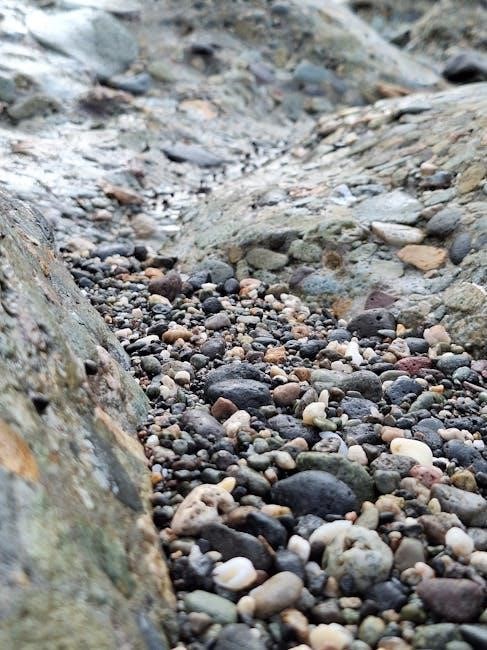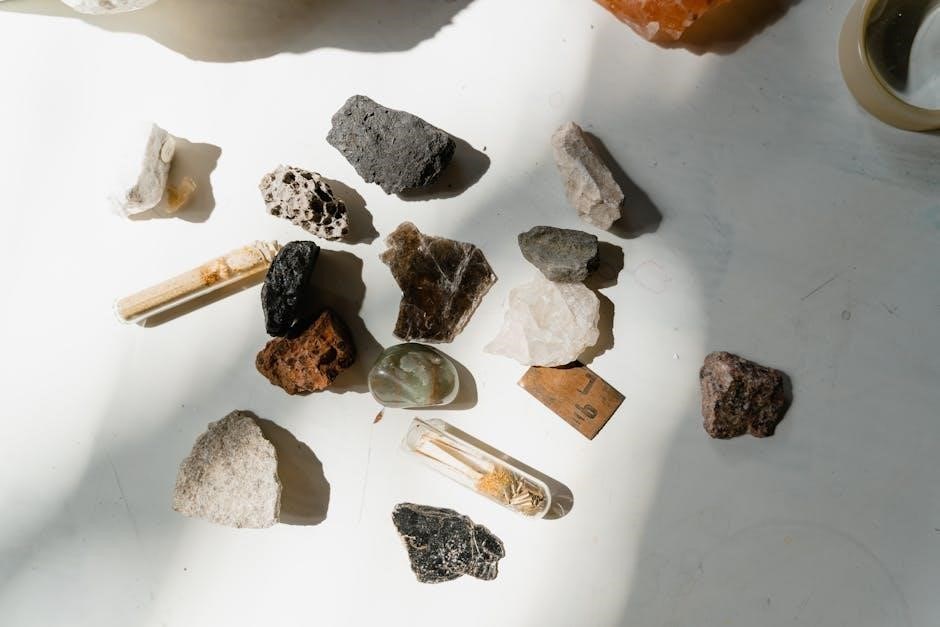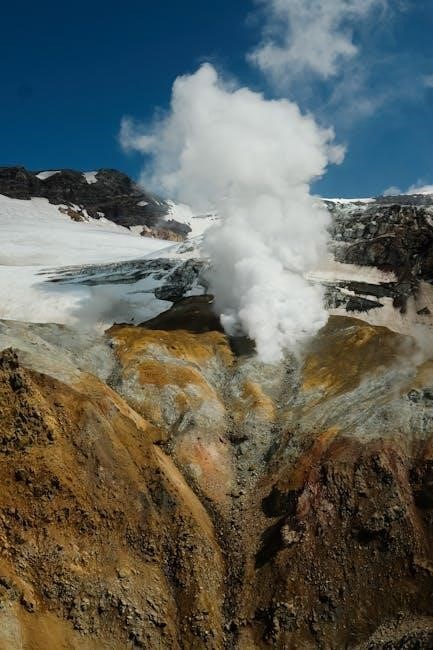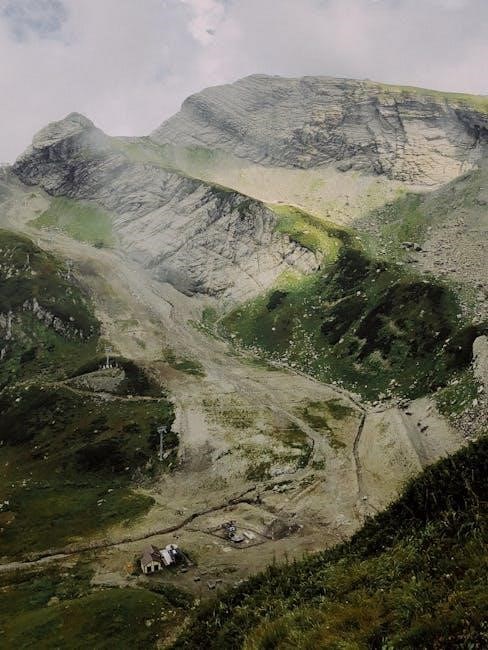Geology is the study of Earth, including its composition, structure, processes, and history. Rocks, the Earth’s solid crust’s essential components, are aggregates of one or more minerals. Minerals themselves are naturally occurring, inorganic solids with a defined chemical composition and crystalline structure, forming the building blocks of rocks.
Importance of Studying Geology
Studying geology is of paramount importance for several reasons. Firstly, it provides insights into the Earth’s history, allowing us to understand past environments, climate changes, and the evolution of life. This historical perspective is crucial for predicting future environmental changes and mitigating their impacts. Secondly, geology is fundamental to understanding natural hazards such as earthquakes, volcanic eruptions, and landslides. By studying geological processes, we can better assess risks and develop strategies for disaster preparedness and mitigation.
Furthermore, geology plays a vital role in resource management. It helps us locate and extract essential resources like groundwater, minerals, and energy sources. Understanding geological formations and processes is crucial for sustainable resource exploitation and minimizing environmental damage. Additionally, geology is essential for civil engineering projects such as dam construction, tunnel building, and infrastructure development. Knowledge of soil and rock properties ensures the safety and stability of these structures.
Moreover, studying geology fosters a deeper appreciation for the natural world and our place within it. It encourages critical thinking, problem-solving skills, and a scientific understanding of our planet.
Rocks: The Earth’s Building Blocks
Rocks are the fundamental materials that make up the Earth’s solid outer crust. They are essentially aggregates of one or more minerals; Understanding rocks is key to deciphering Earth’s history and geological processes shaping our planet.
Types of Rocks: Igneous, Sedimentary, and Metamorphic
Rocks are classified into three main types based on their formation processes: igneous, sedimentary, and metamorphic. Igneous rocks originate from the cooling and solidification of molten rock, either magma (intrusive) or lava (extrusive). Intrusive igneous rocks cool slowly beneath the surface, resulting in larger crystals, while extrusive rocks cool rapidly on the surface, leading to smaller crystals or a glassy texture.
Sedimentary rocks form from the accumulation and cementation of sediments, such as mineral grains, rock fragments, or organic matter. These sediments are typically transported by wind, water, or ice and deposited in layers. Over time, compaction and cementation transform the sediments into solid rock.
Metamorphic rocks are formed when existing rocks (igneous, sedimentary, or even other metamorphic rocks) are subjected to high temperature, pressure, or chemically active fluids. These conditions cause changes in the rock’s mineralogy, texture, or chemical composition, resulting in a new type of rock.
Formation of Igneous Rocks
Igneous rocks, born from the fiery depths of the Earth, solidify from molten rock known as magma or lava. The formation process hinges on cooling and crystallization. Magma, residing beneath the Earth’s surface, cools slowly, granting minerals ample time to grow, resulting in coarse-grained, intrusive igneous rocks like granite.
Conversely, lava, erupted onto the surface, cools rapidly, hindering mineral growth and yielding fine-grained, extrusive igneous rocks like basalt. Some extrusive rocks, like obsidian, cool so quickly that they form a glass with no crystal structure.
The composition of the magma or lava also influences the type of igneous rock formed. Magmas rich in silica tend to form felsic rocks, while those lower in silica form mafic rocks. This cooling process, whether slow or rapid, dictates the texture and mineral composition, shaping the diverse array of igneous rocks found across the globe.
Formation of Sedimentary Rocks
Sedimentary rocks, unlike their fiery igneous counterparts, are forged from the accumulation and cementation of sediments. These sediments, originating from pre-existing rocks, minerals, or organic matter, undergo a journey of weathering, erosion, transportation, and deposition.
Weathering breaks down rocks into smaller fragments, while erosion carries these fragments away. These sediments are then transported by wind, water, or ice, eventually settling in a new location.
The process of lithification transforms these loose sediments into solid rock. Compaction, caused by the weight of overlying sediments, reduces pore space. Cementation, where dissolved minerals precipitate between sediment grains, binds them together. Depending on the source material, sedimentary rocks can be clastic (formed from rock fragments), chemical (formed from precipitated minerals), or organic (formed from organic matter). This intricate process shapes the diverse world of sedimentary rocks.

Minerals: The Foundation of Rocks
Minerals are the fundamental building blocks of rocks. They are naturally occurring, solid, and inorganic substances. Each mineral possesses a defined chemical composition and a specific crystalline structure, dictating its physical properties and role in rock formation.
Rock-Forming Minerals
Rock-forming minerals are those that constitute the majority of rocks on Earth. These minerals, often lacking significant commercial value on their own, are essential for understanding the origin, composition, and history of rocks. They provide insights into the geological processes that shaped our planet, from the cooling of magma to the weathering of mountains.
Common rock-forming minerals include quartz, feldspar, mica, olivine, pyroxene, amphibole, and calcite. Quartz, known for its hardness and resistance to weathering, is a primary constituent of many igneous and sedimentary rocks. Feldspars, the most abundant mineral group in the Earth’s crust, are crucial in igneous and metamorphic rocks. Micas, characterized by their perfect cleavage, contribute to the layered structure of metamorphic rocks like schist and gneiss.
The presence and abundance of these minerals can reveal the conditions under which a rock formed, offering valuable clues to geologists studying Earth’s dynamic processes.

Geological Processes and Mineral Formation
Mineral resources result from specific geologic processes associated with rock formation. These processes, such as the cooling of magma and hydrothermal alteration, dictate how minerals crystallize at varying temperatures and form diverse mineral deposits within the Earth’s crust.
Hydrothermal Alteration and Mineral Deposits
Hydrothermal alteration is a significant geological process where hot, chemically active fluids circulate through rocks, changing their mineral composition. This process often leads to the formation of valuable mineral deposits. These fluids, typically water-rich and heated by magma or geothermal gradients, dissolve and transport elements. When these fluids encounter changes in temperature, pressure, or chemical environment, minerals precipitate out, forming veins, disseminations, or massive ore bodies.
This process is crucial for creating deposits of valuable minerals like gold, silver, and copper, as seen in the Appalachian States. The Great Smoky Mountains’ geology showcases hydrothermal alteration’s effects on metamorphic rocks. Understanding hydrothermal alteration is vital for locating and exploiting economically important mineral resources, contributing significantly to the field of economic geology.
Studying the reactions and pathways within metamorphic rocks reveals the conditions under which these mineral deposits form, providing insights into Earth’s dynamic processes.

Geology and Economic Well-being
Geology is intrinsically linked to economic well-being, as rocks and minerals are essential resources. Their exploitation provides raw materials for industries, energy production, and construction. Understanding geological processes is crucial for the sustainable management of these resources.
Exploitation of Rocks and Minerals
The exploitation of rocks and minerals is fundamental to modern society, driving numerous industries and supporting global economies. Rocks provide the raw materials for construction, including limestone for cement and aggregates for roads. Minerals are essential for manufacturing electronics, vehicles, and countless other products.
The extraction of these resources, however, has significant environmental and social implications. Mining activities can lead to habitat destruction, soil erosion, and water contamination. Sustainable exploitation practices are therefore crucial to minimize these negative impacts.
Responsible mining involves careful planning, environmental monitoring, and rehabilitation efforts. Recycling and reusing materials can also reduce the demand for newly extracted resources. Furthermore, geological knowledge is essential for locating and extracting resources efficiently and safely.
The economic well-being of many regions and even entire states is deeply connected to the exploitation of rocks and minerals. The wise and sustainable management of these resources is vital for long-term prosperity and environmental protection, balancing economic needs with ecological stewardship.

Resources for Further Learning
Numerous resources exist for further geological learning. Geological surveys like the Nevada Bureau of Mines and Geology, and organizations like the USGS, provide valuable data, publications, and educational materials. University programs and science education centers also offer courses and resources.
Geological Surveys and Organizations
Geological surveys and organizations play a crucial role in advancing our understanding of geology, rocks, and minerals. The U.S. Geological Survey (USGS) provides scientific information about the Earth, its natural resources, and the natural hazards that threaten it. The Nevada Bureau of Mines and Geology (NBMG) is a research and public service unit of the University of Nevada and is the state geological survey.
These organizations conduct research, collect data, and disseminate information to the public, policymakers, and industry professionals. They often maintain extensive databases, maps, and publications that are invaluable resources for anyone interested in learning more about geology. Many universities also have geology departments that offer courses, conduct research, and provide outreach programs to the community.
Furthermore, organizations like the Federal Highway Administration contribute by providing technologies for pavements, connecting geology to infrastructure. These various institutions collectively contribute to the broader understanding and application of geological principles, ensuring resources are accessible for both academic and practical purposes, promoting informed decision-making related to Earth’s resources and hazards.


